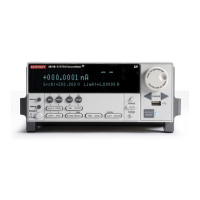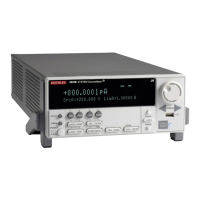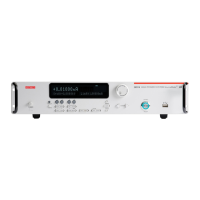3: Functions and features Series 2600B System SourceMeter® Instrument
3-16 2600BS-901-01 Rev. B / May 2013
Reading buffer attributes
Use the reading buffer attributes to access the reading buffer data. The table below displays the
attributes that you can use to access the reading buffer data.
Recall attributes
Recall attribute* Description
An array (a Lua table) of strings indicating the function measured for the
reading (current, voltage, ohms, or watts).
An array (a Lua table) of full-scale range values for the measure range used
when the measurement was made.
An array (a Lua table) of the readings stored in the reading buffer. This array
holds the same data that is returned when the reading buffer is accessed
directly; that is,
and
access the same value.
An array (a Lua table) of strings indicating the source function at the time of the
measurement (current or voltage).
An array (a Lua table) of strings indicating the state of the source (off or on).
An array (a Lua table) of full-scale range values for the source range used
when the measurement was made.
If enabled, an array (a Lua table) of the sourced values in effect at the time of
An array (a Lua table) of status values for all of the readings in the buffer. The
status values are floating-point numbers that encode the status value into a
floating-point value. See Buffer status (on page
3-17).
If enabled, an array (a Lua table) of timestamps, in seconds, of when each
reading occurred. These are relative to the basetimestamp for the buffer. See
Reading buffer commands (on page
3-12).
* The default attribute is readings, which can be omitted. For example, both smua.nvbuffer1 and
smua.nvbuffer1.readings will access readings from channel A, buffer 1.
Examples:
The following programming example illustrates how to output 100 channel A readings from buffer 1:
printbuffer(1, 100, smua.nvbuffer1.readings)
Similarly, the following would output 100 channel A corresponding source values from buffer 1:
printbuffer(1, 100, smua.nvbuffer1.sourcevalues)
The default reading attribute is readings, and can be omitted. Thus, the following would also output
100 channel A readings from buffer 1:
printbuffer(1, 100, smua.nvbuffer1)
